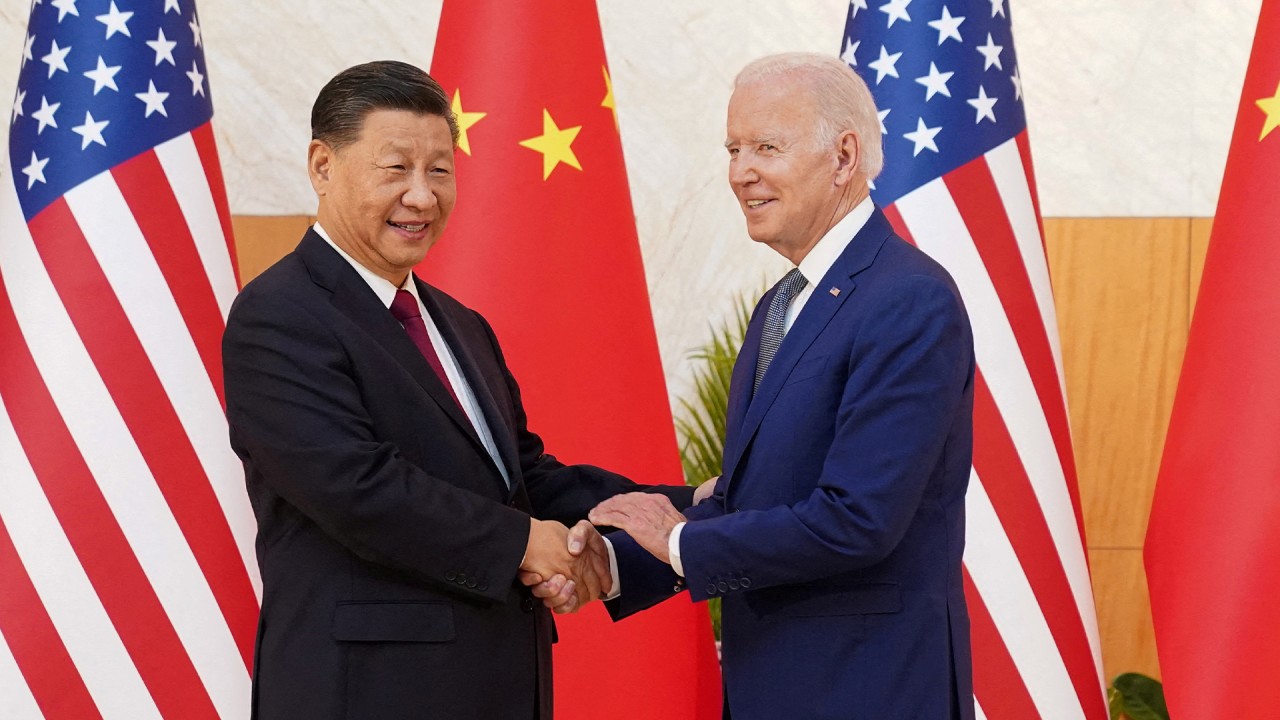
Have Beijing’s ‘red lines’ on Taiwan sparked a white-hot dilemma?
- Despite repeated warnings and threats to foreign powers over Taiwan, observers say Beijing has avoided spelling out consequences
- Mainland China’s red lines have also created challenges in managing domestic expectations, experts say
While the language seemed unambiguous, the statement appeared to do little to advance relations between the two nations, which have spiralled downward to the point where there are concerns of a potential military confrontation.
Historical misunderstanding?
The document provides a legal framework that specifies three conditions under which Beijing said it would use “non peaceful means” for Taiwan’s reunification. These include Taiwanese authorities formally pursuing secession from China, “incidents entailing Taiwan’s secession from China”, or a situation in which “possibilities for a peaceful reunification should be completely exhausted.”
Chinese, US defence chiefs agree to improve dialogue but stand firm on Taiwan
Two years before the law was enacted, People’s Liberation Army military officers warned that a Taiwanese independence referendum could be considered cause for war.
Yet, Beijing has remained vague about when and under what circumstances the law would be invoked. For years, the ambiguity has spurred discussions on the mainland to amend the law, especially the clause concerning the use of “non-peaceful” means.
Zhou Bo, a senior fellow at the Centre for International Security and Strategy at Tsinghua University, said Beijing was likely to continue to refrain from specifying the circumstances under which force would be used, since the lingering haziness over consequences seemed to benefit Beijing, for now.
“The ambiguity is necessary, because the US also adopts strategic ambiguity on this matter. It is impossible for China to make it clear, but the bigger principles have been clear,” Zhou said, adding that he considered the Anti-Secession Law the most specific official red lines set out by Beijing to date.
Where do the ‘red lines’ lie today?
Washington’s policy has been to be intentionally vague about whether it would come to Taiwan’s defence if Beijing attacked. The stance is meant to deter the mainland from taking action, without the US committing itself to war.
There has been discussion in Washington about whether the policy should be abandoned in favour of “strategic clarity” for stronger deterrence. Over the course of his presidency, Biden has pledged several times that the US would defend Taiwan if Beijing were to attack the island.
Michael Mazarr, a Washington-based senior political scientist at the Rand Corporation, said understanding what a red line was should not be oversimplified.
“[For China], a formalised policy of independence is the obvious red line, just as an outright unprovoked invasion is our obvious red line,” Mazarr said.
“But there’s also a much more amorphous idea that a collection of activities will cross some red line that is not defined at some point. And that’s kind of more dangerous.”
Mazarr said that a series of Taiwan-related policies was under way in the US that could potentially trigger a strong military response from Beijing.
The bill proposes allowing Taiwan the same treatment as any other major non-Nato ally, by allocating US$4.5 billion in security help over four years. It would also set up a broad economic sanctions scheme to target Beijing officials and financial institutions in case of “hostilities” towards Taiwan.
Zhou, who joined the PLA in the late 1970s and served in a range of high-level posts, said even without absolute clarity on China’s red line, the US would be able to make an assessment.
“The most important thing is for the US to know that we have a red line. As to what the red line is – they can try to test it by many means, like exchanges with the Chinese side … and for example our reaction towards Pelosi’s visit to Taiwan. We have reacted on an unprecedented level,” Zhou said.
“So if there is another visit like this next time, in a way, China’s response would be predictable in a way.”
‘Red line’ or red carpet?
Beijing’s repeated warnings not to cross its red lines have also raised what some observers see as a dilemma in managing domestic expectations.
When Pelosi went ahead with her Taiwan trip despite Beijing’s warnings, nationalistic sentiment surged on social media, with some suggesting Beijing was being too weak.
“The red line has been stepped on so many times that it must have become a red carpet by now,” said one popular Weibo post.
Australia, Taiwan investment grows against backdrop of China concerns
“So I think that to me, this idea of a creeping red line is maybe the bigger strategic challenge than really explicit red lines.”
“Looking at the historical piece of this and other examples of deterrence and potential for aggression, an objective assessment about whether you’re going to win is not usually the thing that makes the difference. Countries go to war when they think they have to,” Mazarr said.



